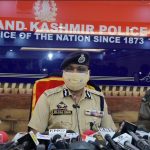Jammu And Kashmir: Complex Realities After Bifurcation telegraphindia.com
In the three months since Parliament passed the Jammu and Kashmir Reorganisation Act, there have been small signs that the internal structural challenges have been addressed even though in some aspects the realities within the former state have become even more complicated. The three distinct regions, with varied cultures, geography and languages, became a singular political entity called Jammu and Kashmir in 1846 when the British East India Company transferred the Kashmir Valley, which it had acquired from the disintegrating Punjab empire to Gulab Singh of Jammu in consideration of a sum of 75 lakh rupees. Gulab Singh’s general, Zorawar Singh, had conquered Ladakh in 1834.
With a population of nearly 300,000, the Ladakh region seems to be the main beneficiary of the Jammu and Kashmir Reorganisation Act. The region was administered from the winter capital, Jammu, and the summer capital, Srinagar. Coinciding with the beginning of militancy in the Valley — it later spread to Jammu province — the demand for a Union territory in Ladakh had become a mass-based movement in Buddhist-majority Leh. In 1989, the agitation started by the Ladakh Buddhist Association lasted for four months. The administration was paralyzed by a month-long strike by Buddhist employees. The agitation had taken a violent turn with three LBA activists killed in police firing on August 27, 1989.











Leave Your Comment